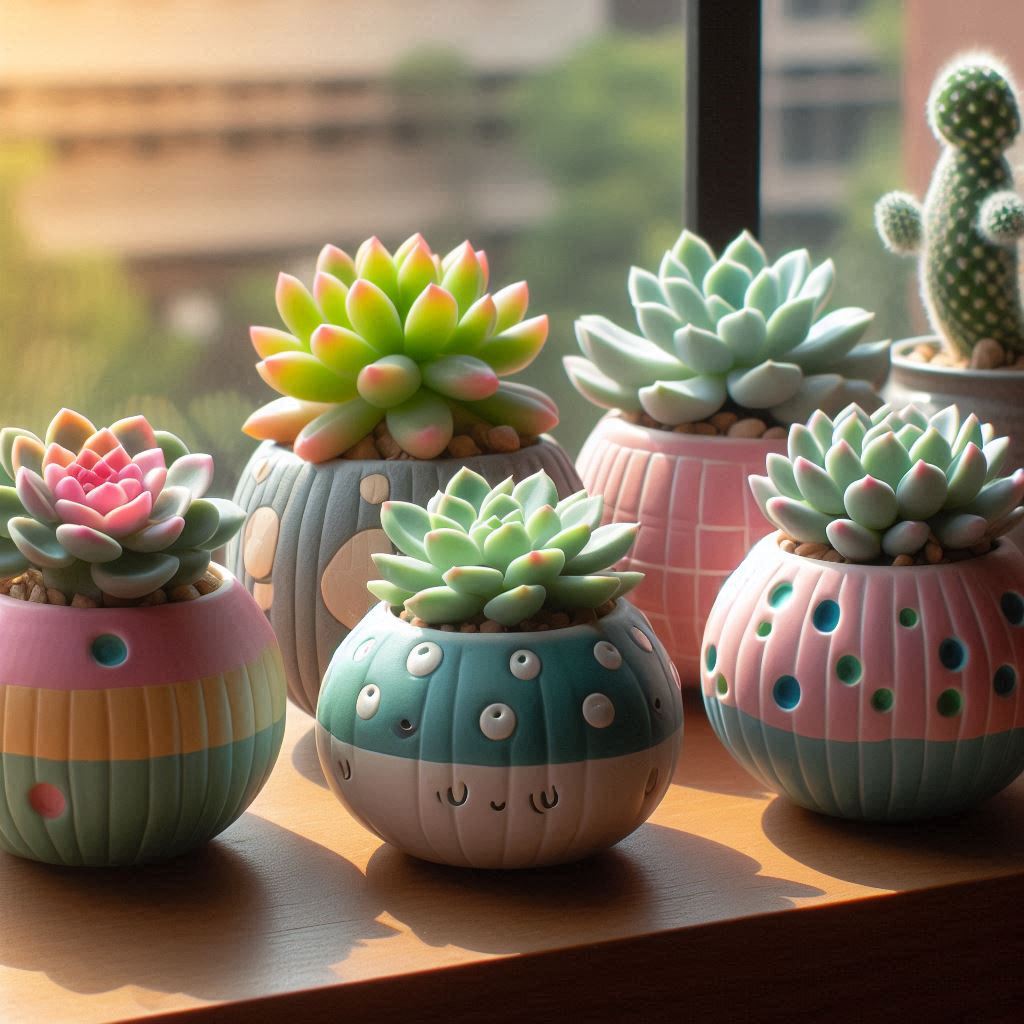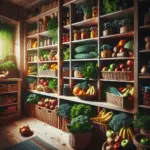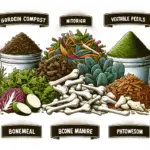Are succulents toxic to dogs? As a pet owner, it’s crucial to know which plants could pose a threat to your dog’s health. This guide explores the potential dangers of succulents and provides valuable insights on keeping your furry friend safe. Explore the symptoms of poisoning and discover safe alternatives for your home decor.
Which Succulent Varieties Are Toxic to Dogs?
Certain succulent varieties can pose a significant risk to dogs due to their toxic properties. Aloe Vera is one of the most well-known succulents that contain saponins, which can cause symptoms such as vomiting and diarrhea in dogs.
Euphorbia
species, including the popular ‘Crown of Thorns’ and ‘Pencil Cactus,’ contain a milky sap that is highly irritating and can be toxic when ingested, leading to stomach discomfort and skin irritation.
Kalanchoe is another group of succulents that are hazardous to dogs. These plants contain cardiac glycosides, which are compounds that can affect the heart rate and lead to serious health issues. Similarly, Jade Plant (Crassula), although often kept as an indoor plant, is toxic if consumed by pets, potentially causing vomiting and lethargy.
Sago Palm, although not a true succulent, is frequently found in gardens and mistaken for one. It is extremely poisonous and can cause severe liver damage upon ingestion. However, it’s essential to recognize that not all succulents are harmful.
Identifying specific toxic succulents
will help protect your pet, ensuring you can enjoy the beauty of these plants without compromising your dog’s health. Always keep unsafe plants out of reach and consider pet-friendly alternatives for your home and garden.
Common Succulents That Are Safe for Pets
When it comes to keeping your pets safe, knowing which succulents are non-toxic is essential. Fortunately, many common succulents are completely pet-friendly. Echeveria varieties, for example, are a favorite among succulent enthusiasts and are safe for dogs and cats. These beautiful rosettes come in various colors and thrive with minimal care.
The Haworthia is another excellent option if you’re looking for a non-toxic plant. This succulent resembles an aloe plant but won’t harm your furry friends. Its spiky leaves make it a visually appealing addition to any home.
Senecio, like the popular string of pearls, is also pet-safe. This cascading plant adds a unique touch to your garden or indoor space without the risk of poisoning your dog or cat.
Furthermore, the burro’s tail (Sedum morganianum), with its thick, trailing leaves, is not only easy to care for but poses no threat to pets.
If you’re fond of unique-looking succulents, consider the Zebra Plant (Haworthia fasciata), known for its striking white stripes. It’s perfect for succulent enthusiasts who value both aesthetics and safety.
Safe Practices
Keep these non-toxic options on hand to ensure that your love for plants can coexist harmoniously with your love for pets. Succulents can be a delightful and safe addition to any pet-friendly home when these types are chosen.
Symptoms of Succulent Poisoning in Dogs
When dogs nibble on certain succulents, it can lead to various health issues. Recognizing the symptoms of succulent poisoning in dogs is critical for prompt treatment. Common signs include vomiting, diarrhea, and lethargy. Dogs might also experience drooling or lack of appetite due to nausea. The severity of these symptoms can vary based on the type of succulent and the amount ingested.
More severe symptoms could involve difficulty breathing, muscle tremors, or even seizures. If you notice these behaviors, it’s crucial to seek veterinary care immediately. Early intervention can prevent more serious health complications. Monitoring your dog’s symptoms can help the vet provide the best treatment possible.
Additionally, keeping a close watch on your pet’s behavior and having knowledge about the toxic plants in your environment can be a life-saver. Prevention is always key, so understanding the potential risks of succulent poisoning will aid in making informed decisions regarding the plants you choose to have around your home.
How to Identify Toxic Succulents in Your Home or Garden
Understanding the differences between safe and toxic succulents is crucial for pet owners. Look out for certain characteristics that may indicate a succulent is potentially harmful. Toxic succulents often have milky sap or are in the Euphorbia family.
Check Plant Labels
Always check plant labels or research online to confirm the succulent’s species. Labels often note whether a plant is safe or toxic. Research reputable plant databases for detailed information.
Visual Inspection
Carefully inspect your succulents. Toxic types like Euphorbia produce a white sap, which can be an irritant. Also, be cautious of succulents with colorful flowers or leaves, as these can sometimes indicate toxicity.
Consulting Experts
If in doubt, consult gardening experts or local horticulturists. They can provide guidance on specific toxic succulents in your area. Knowing the specific type of succulents in your home or garden can prevent future emergencies. By taking these proactive steps, you can ensure a pet-safe environment and peace of mind.
What to Do If Your Dog Eats a Toxic Succulent
If your dog accidentally consumes a succulent plant, it’s crucial to act swiftly. The first step is to remain calm. Next, identify if the succulent is indeed toxic. List common toxic succulents such as Jade Plant, Aloe Vera, and Kalanchoe. Knowing the plant’s name will assist the vet in advising appropriate action.
Once the plant is identified, assess your dog’s symptoms. Common signs of poisoning include vomiting, diarrhea, lethargy, and excessive drooling. If any severe symptoms manifest, it’s imperative to contact your vet immediately or take your dog to the nearest animal hospital. Always keep the ASPCA Animal Poison Control Center number handy for emergencies.
While addressing the issue, avoid inducing vomiting unless instructed by a professional. Instead, make sure your pet has access to fresh water.
To prevent future incidents, place toxic succulent varieties out of reach or replace them with non-toxic alternatives.
Consider using pet-safe fencing
if your plants are located outdoors. Being proactive can save your pet from further complications.
Non-Toxic Succulents: Pet-Friendly Plant Options
When considering pet-friendly plants, non-toxic succulents are a great choice for pet owners. These succulents allow you to enjoy the beauty of greenery without compromising your pet’s safety. Ensuring you choose the right succulent is vital to avoid potential harm to your furry friends.
There are many succulents safe for both dogs and cats. Species like Haworthia, Echeveria, and certain varieties of Sedum are known for being non-toxic. These plants can add vibrant colors and unique textures to your garden or indoor spaces without adding any risk to your pets.
One of the most significant advantages of non-toxic succulents is that they are low maintenance. This means you can effortlessly enjoy greenery while knowing your pets remain unharmed even if they decide to nibble on them. These options provide the perfect balance between aesthetic appeal and animal care.
Consider using these pet-friendly plants as a safe landscaping option. It’s essential to research and confirm the plant types that suit your home environment and protect your pets from hazardous exposures. With careful selection and awareness, you can create an ideal setting where nature and your pets coexist harmoniously.
How to Keep Your Dog Safe Around Succulents
Ensuring the safety of your dog around succulents involves a few strategic steps. Firstly, identify any succulents in your home or garden that could potentially be toxic. Keep these plants out of reach, perhaps on high shelves or in a space not accessible to your pet. Using barriers or indoor plant shelving might also help to keep curious pups at bay.
Introduce non-toxic succulents that are safe for dogs to your garden or home as a friendly alternative. Succulents like Haworthia and Echeveria offer both beauty and safety, as they are not harmful to dogs. If you enjoy tending to plants within reach of your pets, these species are a great option.
Educating yourself and those in your household on the identification of toxic succulents is crucial. This knowledge allows rapid action if your pet interacts with a potentially hazardous plant. Regular checks around your home and garden can help mitigate risks by removing or repositioning danger-prone plants.
Another approach is training your dog to avoid certain areas. Teaching commands such as “leave it” can significantly reduce the risk of ingestion of harmful plants. Also, ensuring your dog has adequate playtime and stimulation can deter them from sniffing into your greenery out of boredom.
Finally,
always keep emergency contacts handy,
such as your veterinarian or a pet poison hotline. Quick access to these can be lifesaving in situations where you suspect your dog has ingested a toxic succulent. Taking prompt action is vital to ensuring the safety and wellbeing of your furry friend.
Are Aloe Vera and Other Popular Succulents Harmful to Dogs?
While succulents like Aloe Vera are popular for their low maintenance and attractive appearance, they can pose a hidden threat to our canine companions. Aloe Vera contains compounds called saponins, which are toxic to dogs. When ingested, these compounds can lead to symptoms such as vomiting, diarrhea, and changes in behavior. In contrast, succulents like Haworthia and Gasteria are safe for pets and can be great additions to a pet-friendly garden.
Dogs may be drawn to succulents due to their interesting textures and shapes, making it essential for pet owners to educate themselves on which plants are harmful. Understanding that not all succulents are safe is crucial. Popular varieties, such as the Jade Plant and Snake Plant, also known as Crassula ovata and Sansevieria trifasciata, respectively, contain toxic substances that could harm your dog if consumed.
One of the most effective ways to safeguard your pet is to choose non-toxic plants for your home and garden. Fortunately, there are many pet-safe succulents out there. The Zebra Plant (Haworthiopsis) and the Ponytail Palm (Beaucarnea recurvata) are excellent choices that won’t jeopardize your dog’s health.
Important Steps if Ingestion Occurs:
If you suspect your dog has ingested a toxic succulent, contact your veterinarian immediately. Keep the plant sample available to help identify the poison. Prompt action can prevent serious health consequences and ensure a quick recovery for your beloved pet.
Remaining vigilant about the types of plants your dog has access to can help prevent accidental poisoning. By selecting non-toxic succulents and being aware of potentially harmful varieties, you can create a safe and harmonious environment for both plants and furry friends.
The Importance of Recognizing Toxic Succulents for Pet Owners

Recognizing toxic succulents is crucial for pet owners who want to keep their furry friends safe. Not all succulents pose a threat, but some contain substances that can be harmful to animals. Pet owners need to be aware of the potential dangers lurking in their indoor and outdoor spaces.
Kalanchoe and Euphorbia varieties, for example, contain compounds that can cause vomiting, diarrhea, and even more severe symptoms if ingested. It’s essential to know which plants in your collection could be a risk to curious pets.
Avoiding accidental ingestion involves more than just knowing which succulents are dangerous. Pet owners should learn how to identify these plants properly. Many toxic succulents have distinct features that can help in their recognition, such as milky sap, thick stems, or unusual leaf patterns.
Keeping your pets safe also requires strategic placement of your plants. Consider areas that are out of reach or use barriers to prevent your dog from accessing specific plants. Knowing what to do in case of ingestion is also vital. Immediate veterinary care can be life-saving if you suspect your pet has chewed on a toxic succulent.
By prioritizing the recognition and understanding of toxic succulents, pet owners can ensure a safe home environment, reducing the risk of harm and ensuring that both gardens and pets thrive together.
How Much of a Succulent Is Dangerous for a Dog to Ingest?
When it comes to succulents and their potential danger to dogs, understanding the amount that can be harmful is crucial. While some succulents are relatively safe, others are toxic even in small amounts. The severity of symptoms can vary based on the succulent type and the quantity ingested. It’s essential to know that while large quantities tend to be more dangerous, even small bites of certain toxic succulents can pose a risk.
Understanding Toxicity Levels: Each succulent has different levels of toxicity, and not all of them are harmful in the same way or amount. For instance, succulents like Kalanchoe might cause mild digestive issues if ingested in small amounts, but larger amounts can cause more severe reactions, such as vomiting or abnormal heart rhythms.
Key Factors to Consider: The size and breed of the dog also play roles in how much of a succulent can be dangerous. Larger dogs might tolerate larger amounts before showing symptoms, while smaller dogs can have severe reactions with less exposure. It’s vital to watch for any unusual behavior or symptoms if you suspect your dog has ingested any succulent.
Monitoring your dog’s health and knowing the plants in your surroundings can help prevent serious health issues. Always keep emergency veterinary contact information handy and seek professional advice immediately should ingestion occur, regardless of the perceived quantity consumed.
Preventing Accidental Ingestion of Toxic Succulents by Dogs
To prevent accidental ingestion of toxic succulents by dogs, consider placing toxic varieties out of reach or in areas not accessible to pets. Using hanging pots or high shelves can be effective solutions. Training your dog to avoid houseplants is another preventative step. Teach them commands like ‘leave it’ can help deter exploration of plants. Supervision is crucial, especially if you’re introducing new plants to your environment.
Regularly inspect your garden and remove fallen leaves that may entice a curious pup. Creating a physical barrier, such as fencing or netting, around your succulent collection can also prevent unintentional access. Encourage family members and guests to be aware of the plants in your home and potential risks they pose to pets. Providing your dog with safe, alternative chew toys can satisfy their curiosity and reduce the likelihood of plant consumption.
When choosing succulents, opt for non-toxic varieties and integrate them with your existing garden setup. Always research new plants before introducing them into your home or garden. If you’re unsure of a succulent’s safety, consult reputable plant databases or seek advice from a veterinarian. Maintaining a pet-safe home involves vigilance and informed choices, ensuring the well-being of your furry friends.
Creating a Pet-Safe Garden with Non-Toxic Succulents
Ensuring your garden is safe for pets means choosing the right plants that won’t harm your furry friends. Non-toxic succulents are an excellent option for creating a beautiful yet safe garden environment. These succulents not only add aesthetic appeal but also provide peace of mind for pet owners.
When designing a pet-friendly garden, consider using succulents like Haworthia, Echeveria, and Graptopetalum. These varieties are known for their minimal toxicity, making them safer choices around dogs. Not only do they thrive in different climates, but they also require low maintenance, which is ideal for busy pet owners.
To prevent accidental ingestion, place plants in elevated pots or use decorative barriers. Additionally, regularly check each plant’s condition, ensuring there are no dead leaves or fallen pieces that pets might chew on. Implementing these measures increases your garden’s safety while maintaining the vibrant appeal of succulents.
Educating yourself on safe succulent options and their maintenance needs will ensure a thriving, pet-safe garden. Choose varieties that match your climate and aesthetic preferences for a delightful combination of beauty and security in your garden space.
The presence of succulents in homes and gardens has surged, thanks to their unique beauty and low maintenance. However, pet owners often worry about the safety of these plants around their furry friends.
Which Succulent Varieties Are Toxic to Dogs? While many succulents are harmless, some can be dangerous. The Kalanchoe, Jade plant, and Euphorbia are known for their toxic properties. Ingestion can lead to vomiting, diarrhea, and other adverse reactions.
Common Succulents That Are Safe for Pets Thankfully, not all succulents pose a risk. Haworthia, Echeveria, and Burro’s Tail are examples of pet-friendly options. These can add greenery to your space without endangering your furry companion.
Symptoms of Succulent Poisoning in Dogs It’s crucial to know the signs of poisoning. Symptoms might include drooling, vomiting, lethargy, and more severe cases could result in tremors or seizures. Always observe your pet closely if you suspect ingestion.
How to Identify Toxic Succulents in Your Home or Garden Familiarize yourself with the appearance and names of various succulent species. Resources like plant identification apps or guides can be invaluable. Check labels when purchasing new plants.
What to Do If Your Dog Eats a Toxic Succulent If ingestion happens, contact your vet immediately. Having details about the specific plant can assist in the treatment. While waiting for veterinary advice, keep your dog calm and monitor their symptoms closely.
Non-Toxic Succulents: Pet-Friendly Plant Options Consider building a collection of non-toxic succulent varieties. Options such as Zebra Haworthia and Christmas Cactus can offer peace of mind and enhance your space.
How to Keep Your Dog Safe Around Succulents Placing plants out of reach and educating family members about plant safety can prevent most accidents. Introducing training or deterrents can also help keep curious pets away from greenery.
Are Aloe Vera and Other Popular Succulents Harmful to Dogs? Aloe Vera is commonly misperceived. While beneficial to humans, it’s toxic to dogs if ingested, causing issues like vomiting and diarrhea. It’s essential to keep such plants well out of a pet’s reach.
The Importance of Recognizing Toxic Succulents for Pet Owners Awareness can’t be overstated. Being informed and cautious means fewer risks of serious health problems for your dog, allowing both your plants and pets to thrive.
How Much of a Succulent Is Dangerous for a Dog to Ingest? Even a small amount can cause issues depending on the plant and size of the dog. It’s important to mitigate any risk if there’s a possibility of ingestion.
Preventing Accidental Ingestion of Toxic Succulents by Dogs Regularly inspecting your plants, supervising your dog in plant areas, and removing known toxic varieties can safeguard your pet.
Creating a Pet-Safe Garden with Non-Toxic Succulents Focus on incorporating a variety of non-toxic plants to build a safe, serene garden space. This approach ensures your garden enhances your home while safeguarding your pet’s health.







